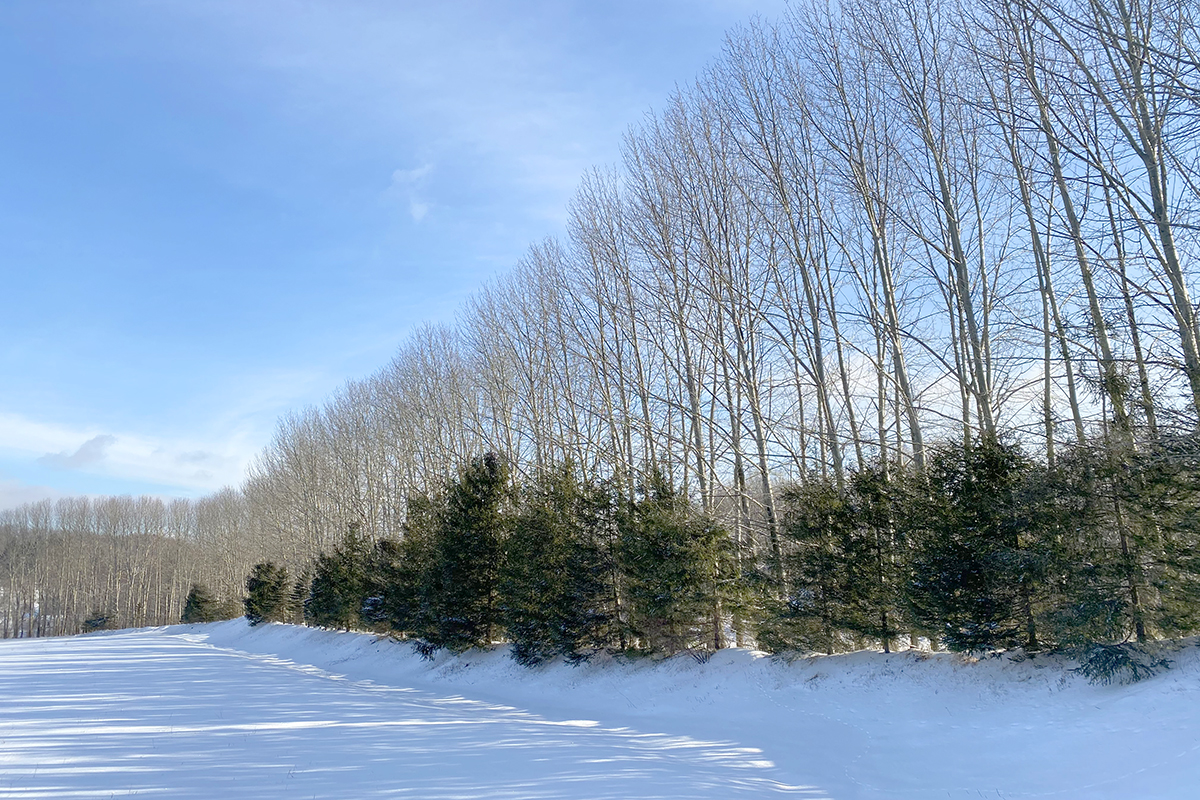Trees of Our Community
About 25 years ago, my wife and I decided to plant trees along the front of our farm, creating an attractive living “window blind,” to block us from the road. Great idea… then the seedlings arrived as “whips” that were ten to twelve feet tall… but now we had 543 trees to plant.
My wife recruited a dozen local high school students to help plant the trees. I used a backhoe to dig holes. Over the next two days, we and our new friends planted the trees. For the next several months thereafter, my wife would pull a 100-gallon tank behind a small tractor and water each and every tree. The trees survived and, in fact, flourished, still providing beauty and privacy.
We learned first-hand about the continued benefits of doing “5 Good Deeds.”
The very process of planting the trees generated good deeds. Both my wife and I have enjoyed the beauty of the trees and the privacy of their foliage – that is good deed (1). We also did a good deed for our daughter who loved watching the tree leaves turn their silver sides up during rainstorms (2). Our neighbors cherish the lovely living wall as they travel past our road frontage (3). We did a good deed for strangers – several of the young men and women who started as strangers actually became friends. And finally, by planting the trees we helped air quality, soil retention, etc. – there you are, a good deed for the earth (5).
On reflection and without awareness at the time, we have done something important within our community. Everyone has benefited by the beauty of vibrant, growing trees. It was especially touching when one of the young men who helped us plant the trees stopped by our farm. We hadn’t seen him for 25 years. He shared with my wife how he has brought his children to see the beautiful trees he helped plant as a high school student.
I hope this inspires you to plant trees on your land, but if you do, bear in mind some lessons that we learned:
-
- Always anticipate the adult, full size tree girth when planting small young trees.
- We planted hybrid poplars which grew rapidly – as we hoped. However, we planted them too closely together, resulting in the gradual attrition of some of the trees trapped in the middle. Because of competition, rather than fully filling out, the trees “focused their attention” on growing taller and are now roughly 50 feet tall.
- Plant trees that are native to your locale. Hybrid poplars grow very fast but can become invasive. This species and willows should not be placed near houses because the roots can damage foundations and drains. This was not an issue for us, so far from the house, but please bear it in mind if you are planning to plant trees. The trees have given us oxygen and beauty, but in retrospect, from a global perspective, we greatly wish that we had planted some of the fast-growing trees that are native to our area.
- Be sure to water the trees often and deeply as they are becoming established. Frequent shallow watering can bring the roots near the surface making them more susceptible to dry periods.
 We are now planning a sequel to the above story. We are investigating, through state forestry and other organizations, how best to reforest one or more of our grass covered pastureland with native trees in the proper proportion. We got the idea from a Canadian arborist who states, in her optimistic and fascinating documentary entitled, “The Call of the Forest”, that global warming can be reversed if we set a goal of planting one tree per person for six years. Because we have more space, we are going to plant extra trees for those people who might wish to do so, but who do not have space available. Long after we are gone, my wife and I will continue to do a good deed for our earth each and every day that those trees or their progeny continue to benefit our planet.
We are now planning a sequel to the above story. We are investigating, through state forestry and other organizations, how best to reforest one or more of our grass covered pastureland with native trees in the proper proportion. We got the idea from a Canadian arborist who states, in her optimistic and fascinating documentary entitled, “The Call of the Forest”, that global warming can be reversed if we set a goal of planting one tree per person for six years. Because we have more space, we are going to plant extra trees for those people who might wish to do so, but who do not have space available. Long after we are gone, my wife and I will continue to do a good deed for our earth each and every day that those trees or their progeny continue to benefit our planet.
This article is shared by doctor, lawyer, woodworker and contributor to Our Earth Every Day, Paul Weygandt

